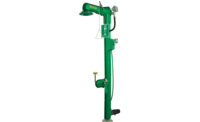Manufacturers can improve workplace safety and minimize unplanned downtime if they know how sudden equipment failures occur and what to do about them. If they prepare their workforce accordingly, they can safeguard staff’s well-being and keep their competitive edge.
Why sudden equipment failures occur
Sudden equipment failure happens even when facility managers and safety personnel believe they’re doing everything right. If they understand its most common causes, they can better prepare and prevent it.
Operator error
Deviation from operating instructions is among the most common causes of equipment failure. According to one estimate, operator error is responsible for 70% of breakdowns. Notably, workers aren’t always purposefully careless — inexperience, ignorance and forgetfulness are common culprits.
Contamination
Spills, regular machine operation and improper maintenance can cause abrupt contamination. For example, an industrial table saw could spread sawdust to nearby machinery. These scenarios often aren’t noticeable because they’re routine.
Contamination can occur even in clean environments. For example, applying dirty lubricant can seize bearings, causing them to fail. The same concept applies to unclean coolant and polluted air supplies — a single negligent action can be the catalyst for a catastrophic breakdown.
Inaccurate data
Many manufacturers can estimate when components need servicing because they use sensors, technician reports and feedback logs to track wear. Sometimes, their readings aren’t as accurate as they should be.
Inaccurate equipment data caused by mismeasurements, tampering or software errors can lead to unexpected failures. Administrators won't alert the operator if they don’t see any anomalies or concerning readings.
Improper installation
Improper installation, removal, maintenance or part replacement can create unseen faults. Since technicians’ logs often make it seem like everything is in working order, the inevitable breakdown happens unexpectedly.
Preparing employees for sudden equipment failure
Since faults can appear at any time, employees should be prepared. Facility managers can take various measures to ensure they respond appropriately and improve workplace safety.
Emergency plans
Every workplace needs an emergency response plan. Facility managers should ask what machines are susceptible to breakdowns, which team members are at risk and what workers need to know to protect themselves. They can use their answers to form new safety policies, evacuation routes or training materials.
Employee training
Training is critical because workers can only prepare for emergencies if they know the basics. For instance, the risk of workplace accidents doubled in India because those with inadequate training neglected essential safety measures.
On top of basics like wearing personal protective equipment and following lockout tagout procedures, manufacturers should hold in-depth sessions. Aggregating equipment health data and workers’ anonymous questions can help them determine topic relevance.
Improvised safety drills
While training is crucial, research shows employees forget 50% of what they learned within days. Facility managers can circumvent this outcome by utilizing an improvised safety drill as a kind of pop quiz. These exercises help people commit the sessions to memory, highlight the importance of safety and give management an idea of individuals’ readiness.
Employee incentives
Manufacturers can build a safety culture by rewarding workers when they comply with policies, respond to drills appropriately or recall their training material. Bonuses, extra time off, break room perks and later start times are examples of quality incentives.
Safety simulations
Gamification — using video or board game elements — in training encourages workplace-wide participation. Manufacturers can use scoreboards, leveling systems, consistency streaks, or leaderboards to drive and hold workers’ interest, helping build a safety-first culture.
Minimizing manufacturing downtime in the meantime
Addressing sudden equipment failures doesn’t just make the workplace safer — it prevents unplanned downtime and increases productivity. Whether the loss of functionality is partial or complete, production times are affected, and facility managers should determine a fix.
According to one survey, every manufacturing sector saw hourly downtime costs more than double from 2020 to 2022. Although this figure might seem daunting, leaders should use it to their advantage to secure board buy-in for more funding. Using artificial intelligence or predictive maintenance systems to order replacement components before they’re needed gives technicians enough time to repair faults before they turn into full-blown breakdowns.
Another method is to have redundancies. While storing extra machines or components might seem like an unnecessary draw on storage space and carrying costs, it’s cost-effective in the long term. Instead of losing time and money during outages, manufacturers can stay up and running.
Alternatively, facility managers could adopt improved maintenance strategies like preventative maintenance. It can lower equipment failure rates by 75%, reduce downtime by 45% and increase production rates by 35% — all while decreasing maintenance costs by 35%.
How to navigate safety preparation and policy changes
Adopting new technology, policies, or procedures to protect workers and workplaces from sudden machinery failure can be beneficial, but it takes time and effort. Managers should be mindful of the upfront cost of extra training, compliance incentives and redundancies so they can work them into the budget strategically.
Acceptance is another major consideration — workers may feel reluctant to embrace a safety-first culture if it differs significantly from what they’re used to. Manufacturers should make changes slowly to get everyone used to the new reality.
Even then, the learning curve accompanying new changes can make integration less smooth than it should be. Manufacturers should provide workers with informational material, put up a frequently asked questions page and hold training sessions to help them adapt to changes as quickly as possible.
Make changes for a safer, more productive workplace
Decision-makers should address sudden machinery failures by preparing workers. After all, there’s no preventing every fault or failure, but they can train people to react quickly and safely.
However they go about it, they’ll see safety and productivity improvements. A few changes can go a long way in safeguarding the workforce and ensuring production continues unobstructed.



